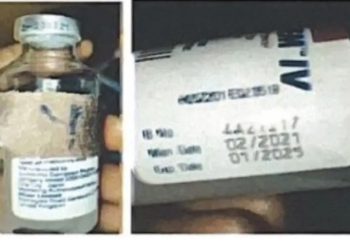The United States’ Food and Drug Administration has approved two new medicines for the treatment of sickle cell conditions.
The two treatment drugs are Casgevy and Lyfgenia, and they both represent the first cell-based gene therapies meant for the treatment of sickle cell disease (SCD) in patients of 12 years old and above.
This latest milestone was announced in a statement signed by Nicole Verdun, the director of the Office of Therapeutic Products at the FDA’s Center for Biologics Evaluation and Research, on Friday.
“Sickle cell disease is a rare, debilitating and life-threatening blood disorder with significant unmet need, and we are excited to advance the field especially for individuals whose lives have been severely disrupted by the disease by approving two cell-based gene therapies today,” said Nicole Verdun.
“Gene therapy holds the promise of delivering more targeted and effective treatments, especially for individuals with rare diseases where the current treatment options are limited.”
COMMENT ON CASGEVY
Both medications underwent multi-centre trial and administration in adult and adolescent patients with sickle cell disease. The trial period recorded beautiful outcomes.
A total of 44 patients were treated with Casgevy. In particular, 29 (93.5 percent) of 31 patients administered with Casgevy with sufficient follow-up time became free from severe vaso-occlusive crises episodes for at least 12 consecutive months during the 24-month follow-up period.
Common among its side effects were low levels of platelets and white blood cells, mouth sores, nausea, musculoskeletal pain, abdominal pain, vomiting, febrile neutropenia (fever and low white blood cell count), headache and itching.
Interestingly, Casgevy is the first FDA-approved treatment to utilize a type of novel genome editing technology. Genome editing technology is a group of technologies that help scientists to change an organism’s DNA by adding, removing or altering at particular locations in the genome.
COMMENT ON LYFGENIA
On the other hand, 28 (88 percent) of 32 patients aged between 12 and 50 years old treated with Lyfgenia experienced complete resolution of vaso-occlusive events (VOE-CR) during a single-arm, 24-month multi-centre study.
On how the drug’s potency was evaluated, the agency explained that effectiveness was evaluated based on complete resolution of VOEs (VOE-CR) between 6 and 18 months after infusion with Lyfgenia.
The most common side effects manifested by the candidates with a history of VOE were stomatitis (mouth sores of the lips, mouth, and throat), low levels of platelets, white blood cells, red blood cells and febrile neutropenia (fever and low white blood cell count) consistent with chemotherapy and underlying disease.
The World Health Organisation (WHO) approximates that five percent of the world’s population has mainly sickle cell disease and thalassaemia caused by haemoglobin disorders.

























